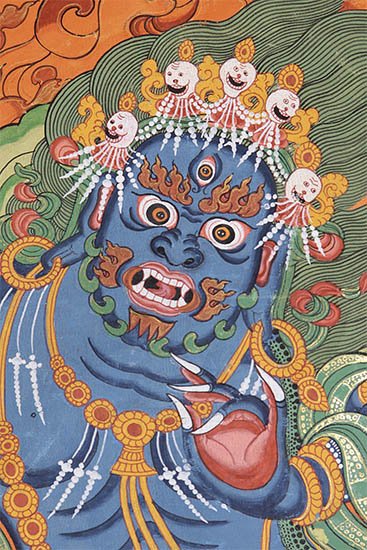Mahabrahmanacakravartin, Mahābrahmāṇacakravartin, Mahabrahmana-cakravartin: 1 definition
Introduction:
Mahabrahmanacakravartin means something in Buddhism, Pali. If you want to know the exact meaning, history, etymology or English translation of this term then check out the descriptions on this page. Add your comment or reference to a book if you want to contribute to this summary article.
Alternative spellings of this word include Mahabrahmanachakravartin.
In Buddhism
Tibetan Buddhism (Vajrayana or tantric Buddhism)
Source: academia.edu: The Structure and Meanings of the Heruka MaṇḍalaMahābrahmāṇacakravartin (महाब्रह्माणचक्रवर्तिन्) is the name of a Vīra (hero) who, together with the Ḍākinī named Mahābrahmāṇavartinī forms one of the 36 pairs situated in the Kāyacakra, according to the 10th century Ḍākārṇava chapter 15. Accordingly, the kāyacakra refers to one of the three divisions of the nirmāṇa-puṭa (emanation layer’), situated in the Herukamaṇḍala. The 36 pairs of Ḍākinīs and Vīras [viz., Mahābrahmāṇa-cakravartin] are body-word-mind-color (mixture of white, red, and black); they each have one face and four arms; they hold a skull bowl, a skull staff, a small drum, and a knife.

Tibetan Buddhism includes schools such as Nyingma, Kadampa, Kagyu and Gelug. Their primary canon of literature is divided in two broad categories: The Kangyur, which consists of Buddha’s words, and the Tengyur, which includes commentaries from various sources. Esotericism and tantra techniques (vajrayāna) are collected indepently.
See also (Relevant definitions)
Partial matches: Mahabrahmana, Cakravartin.
Full-text: Mahabrahmanavartini, Kayacakra.
Relevant text
No search results for Mahabrahmanacakravartin, Mahābrahmāṇacakravartin, Mahabrahmana-cakravartin, Mahābrahmāṇa-cakravartin; (plurals include: Mahabrahmanacakravartins, Mahābrahmāṇacakravartins, cakravartins) in any book or story.